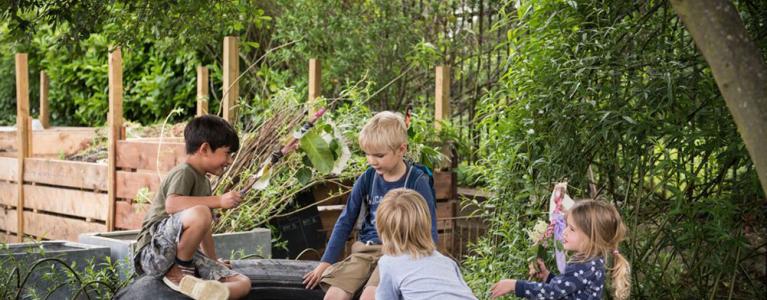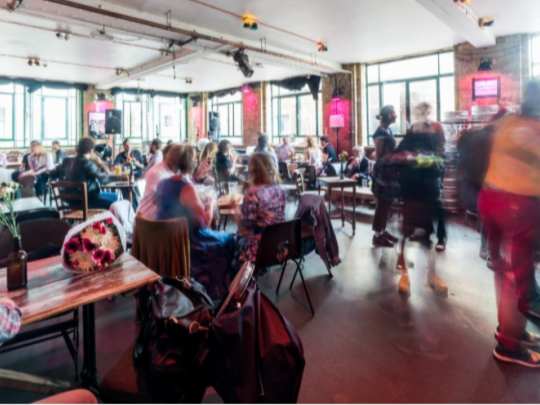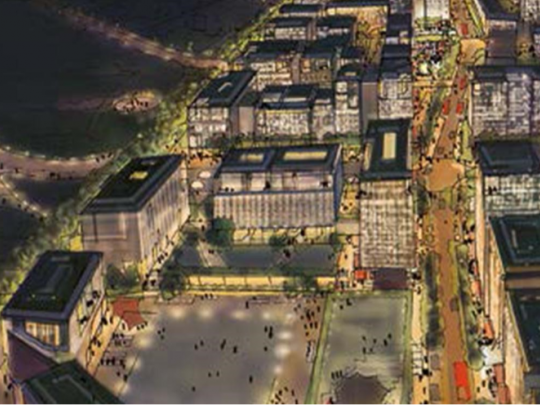
Ecological Urbanism bridges ecology and urbanism, to create a framework for configuring and reconfiguring our towns and cities in harmony with natural ecosystems. An Ecological Urbanism for London seeks to improve the quality of life of all Londoners while recognising that there are biophysical limits and ecological processes that must inform this planning. Recognising these limits and understanding how these processes work is essential to ensuring that our urban fabric works not just for a privileged few, but for all.
High Streets are critical to the metabolism of the city. As 90% of Londoners live within 10 minutes of their local high street, these hubs of activity are the life-blood of the ’15-minute city’ idea: a city where “everyone is able to meet most, if not all, of their needs within a short walk or bike ride from their home” (C40). The ’15-minute city’ reduces travel, facilitates strong local communities, improves the physical and mental health and wellbeing of its citizens, and enables its inhabitants to live socially and environmentally sustainable lives.
To implement ecological urbanism in London means creating the local and regional infrastructure to facilitate the circulation of stuff: from the circulation of nutrients through food growing, harvesting, composting and growing again to the circulation of materials through reclaiming products and materials, repairing and upcycling them, and reusing them. This is how natural ecosystems work: by circulating things in a symbiotic way where no individual (be that a plant or animal or bacteria) takes more than can be replenished by the whole system.
There are already examples of this sort of thinking in London. For example, the Brixton Remakery is a place where people can come together and repair their stuff, rescuing from landfill, saving money and preventing carbon emissions while also creating a social hub. Or the Hackney Bike Workshop that teaches people how to fix their own bikes. Or The Library of Things in Crystal Palace, where you can borough useful tools for DIY projects. And Rype Office, an organisation that re-manufactures office furniture to be re-used and creates new furniture from waste. We need to repair and reuse larger things too, including our buildings. The Arcola Theatre is an example of a refurbishment of a run-down building into a community resource and cultural venue that is also zero carbon.

Sharing is also central to Ecological Urbanism. Sharing is important because recognising that there are limits to the amount of carbon we can emit or volume of raw materials we can extract means that how these resources are distributed becomes critical to equity. An example of a city-wide infrastructure of sharing is our network of libraries, that could become the backbone onto which we share not only books and technology but also all sorts of things from tools to skills to vehicles. Another example is architectural reclamation yards such as Lassco that has three sites (two in London and one in Oxford) where you can find a range of reclaimed materials from flooring to stone-work to ornaments. In ecological urbanism, there would be many more of these yards and we would build almost everything from restored and reclaimed materials. In Brussels, collaborative design practice, Rotor have established Rotor DC, a cooperative that organises the reuse of construction materials. Rework in Wandsworth is a refurbish and reuse project, where repairable white-goods are fixed up by trainees who are getting back into the workplace. By dismantling, processing and trading in salvaged building components, they are contributing to the saving of huge volumes of greenhouse gas emissions while offering the built environment a rich resource of beautiful reclaimed materials.
Imagine a London where our local high streets are the places we go to borrow a drill to upcycle a wardrobe or borrow a massive pan to cook a huge paella for your friend’s birthday or learn to upholster a tired old armchair or to work together with your neighbours to build a shed for the community allotment that works with young people, or to meet your running group that runs to deliver books from the library to people unable to make it to the local high street for whatever reason. Imagine also that these high streets are connected to each other, just like inter-library loans work for books, these high streets can also facilitate the sharing of resources between different parts of London. These will be especially important for building works.
This might sound utopian, but by combining the best technologies from every era – from block printing to blockchain – we can realise this vision. Built environment practitioners and clients are starting to see the social value and wellbeing benefits of taking a more holistic sustainability approach. For example, at Brent Cross Town, Argent and Barnet Council, working with Buro Happold and the University of Manchester are introducing a flourishing index. This index will be used by the Joint Venture to collect personal flourishing information, such as the emotional stability, optimism, and self-esteem of locals and Brent Cross Town's inhabitants, as well as social flourishing insights such as safety, trust and participation. Collecting this data will help create a more evidence informed understanding of the community's health and wellbeing, complementing a series of live design and management guidance documents. The guidance covers aspects including thermal comfort, acoustics, space standards, nature interaction, play, and music, and will be updated as flourishing data is collected.

The traces of this ecological urbanism are already there, we only need to look for them and together build the infrastructures to allow them to replicate and scale-up. This will create a London that will thrive within biophysical limits, and offer prosperity for all.